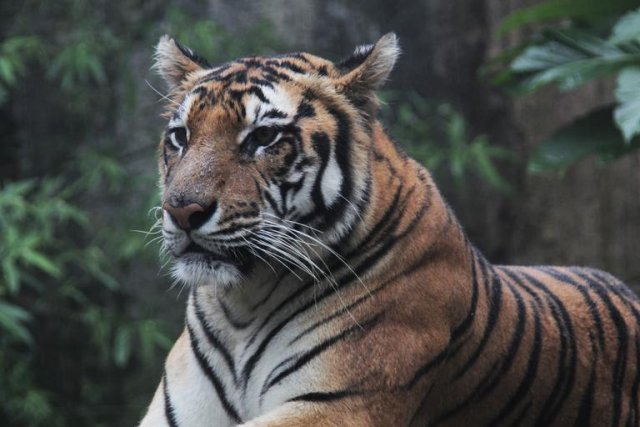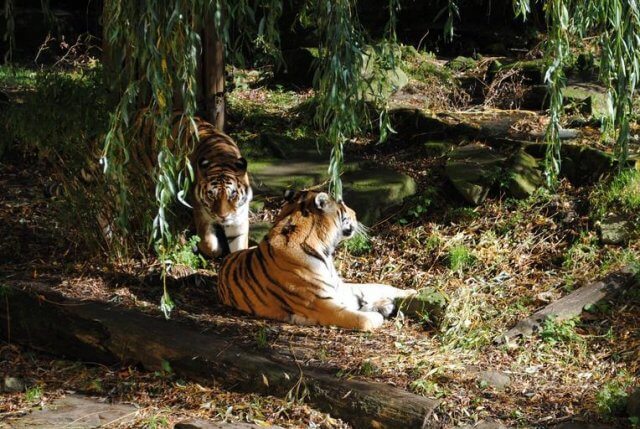The Panthera Tiger: World’s Largest Cat
The Panthera Tiger: A Closer Look at the World’s Largest Cat
The Panthera tiger is the largest of the world’s cats, and one of the most iconic species on the planet. It is a powerful and majestic animal, and its presence in the wild is a reminder of the beauty and fragility of nature.
The Panthera tiger is found in a variety of habitats, from tropical rainforests to temperate grasslands. It is an apex predator, meaning it is at the top of the food chain and has no natural predators. The tiger is an ambush hunter, relying on its powerful muscles and sharp claws to take down its prey.
The Panthera tiger is an endangered species, with only around 3,900 individuals remaining in the wild. The main threats to the species are habitat loss, poaching, and human-tiger conflict. Conservation efforts are underway to protect the species, but much more needs to be done to ensure its survival.
The Panthera tiger is an impressive animal, and its presence in the wild is a reminder of the importance of conservation. It is a symbol of strength and beauty, and its future is in our hands.
Panthera Tiger Conservation: What Can We Do to Help?
The conservation of Panthera tigers is an urgent issue that requires immediate attention. As the world’s largest cat species, tigers are an integral part of the global ecosystem and their continued existence is essential for the health of the planet. Unfortunately, due to poaching, habitat loss, and other human-related activities, the population of tigers has declined drastically in recent years.
Fortunately, there are a number of steps that can be taken to help protect and conserve these majestic creatures. Here are some of the most effective ways to help:
1. Support conservation organizations: Organizations such as the World Wildlife Fund and Panthera are dedicated to protecting tigers and their habitats. By donating to these organizations, you can help fund research and conservation efforts that are essential for the survival of tigers.
2. Spread awareness: Educate yourself and others about the plight of tigers and the importance of their conservation. Share information about the threats facing tigers and the steps that can be taken to protect them.
3. Advocate for policy change: Contact your local representatives and urge them to support policies that protect tigers and their habitats.
4. Reduce your environmental impact: Reduce your consumption of resources and practice sustainable living. This will help reduce the amount of habitat destruction that is contributing to the decline of tigers.
5. Support sustainable tourism: When visiting tiger habitats, make sure to support sustainable tourism practices. This will help ensure that the local economy is not dependent on activities that could harm tigers.
By taking these steps, we can help ensure that tigers will continue to roam the earth for generations to come. With our collective efforts, we can make a difference in the fight to save these majestic creatures.
The Panthera Tiger’s Role in the Ecosystem: Understanding the Big Cat
The Panthera tiger is a majestic and powerful apex predator that plays a vital role in the health of its ecosystem. As the largest of the big cats, the tiger is a keystone species, meaning that its presence and actions have a profound effect on the environment and the other species that inhabit it.
The tiger is a top-level predator, meaning that it is at the top of the food chain and has no natural predators. This allows it to regulate the populations of its prey species, such as deer, wild boar, and antelope, which in turn helps to maintain the balance of the ecosystem. The tiger also helps to keep the populations of smaller predators, such as jackals and foxes, in check.
The tiger is also an important seed disperser. As it moves through its habitat, it carries the seeds of plants in its fur and droppings, which helps to spread the plants throughout the area. This helps to maintain the diversity of the ecosystem and ensures that the plants have a chance to thrive.
The tiger is also an important part of the cultural heritage of many countries. It is revered as a symbol of strength and power, and its presence in the wild is seen as a sign of good luck.
The Panthera tiger is an essential part of the ecosystem, and its presence is essential for the health of the environment. It is important to understand the role of the tiger in the ecosystem and to take steps to protect it and its habitat. By doing so, we can ensure that this majestic big cat continues to play its vital role in the health of its ecosystem for generations to come.
Conclusion
The Panthera Tiger is an incredible animal that is both beautiful and powerful. It is an apex predator that has been around for millions of years and is an important part of the ecosystem. Unfortunately, due to human activities, the Panthera Tiger is now endangered and its population is declining. It is important that we take action to protect this species and its habitat so that future generations can continue to enjoy its beauty and power.
Read More About Tigers From Wikipedia







